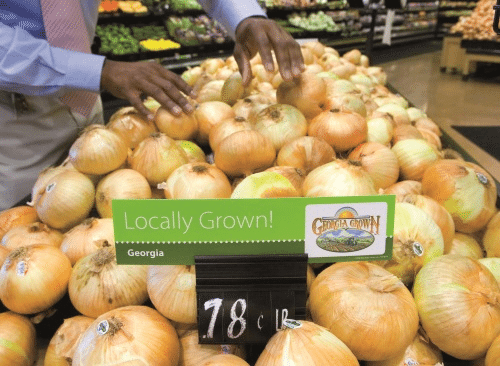Walmart announced its commitment to create a more sustainable food system before hundreds of associates, suppliers and nonprofit organizations at its Global Sustainability Milestone Meeting on October 6, 2014.
The company will reach this goal through four key pillars: improving the affordability of food for both customers and the environment, increasing access to food, making healthier eating easier, and improving the safety and transparency of the food chain.
“The future of food is absolutely critical for both our society and for our business, which means we have a huge opportunity to make a difference here,” said Doug McMillon, president and CEO of Wal-Mart Stores, Inc.
“We’ve learned on our sustainability journey that we’re most successful when our initiatives create social and environmental value and business value at the same time.”
“Food is our number one category worldwide, and we are going to do even more in our grocery business in the years ahead. Paving a sustainable future for food is necessary for society and our business.”
The four pillars outlined in the company’s sustainable food system commitment aim to address major issues and threats facing today’s global food system, including how to address the food needs of a growing population while reducing environmental impact; meeting an increasing consumer demand for greater food transparency; providing more options for healthier eating; and alleviating global hunger.
While Walmart has already made significant progress across the four pillars, the announcement outlined new steps towards a more sustainable food system:
•Affordable: Continuing to reduce the “true cost” of food.
Working collaboratively with suppliers, the company provides everyday low costs for customers and decreases the environmental impact of agricultural practices.
The company has made enhancements in the area of sustainable agriculture, and will advance this work through the launch of its Climate Smart Agriculture Platform.
The platform is designed to provide increasing visibility over the next 10 years to agricultural yields, greenhouse gas emissions, and water usage, while driving adoption of best practices in sustainable agriculture.
•Accessible: Fighting hunger by providing for those in need.
Walmart believes that everyone should have access to affordable, nutritious, sustainably-grown food with its network of thousands of stores around the world, and increasingly through home delivery and convenient collection points. Yet for too many, even this access may be out of reach.
Since announcing its “Fighting Hunger Together” commitment in 2010, Walmart and Sam’s Club facilities have donated more than 1.58 billion pounds of food, surpassing the initial goal of 1.1 billion over five years, a year early.
In addition, Walmart and the Walmart Foundation will elevate their commitment to accessibility by aiming to provide 4 billion healthier meals to those who need them in the U.S. over the next five years.
•Healthier: Making eating healthy easier.
The company has reduced sodium by 13% and sugar levels by 10% in Great Value, Marketside and nationally branded products.
It has launched the “Great for You” icon to empower consumers to identify healthier food options on store shelves.
From 2015, Walmart and the Walmart Foundation will provide nutrition education to four million US households.
•Safe and Transparent: Showing consumers where food comes from.
Walmart will work to provide more information and transparency about the products on its shelves so customers can see where an item came from, how it was made, and decode the ingredient label.
The company will continue to collaborate with its suppliers to track and report the progress of creating a truly sustainable food system.
It will take additional steps in the years ahead to advance the affordability, accessibility, healthier eating, safety and transparency of the food supply system.










